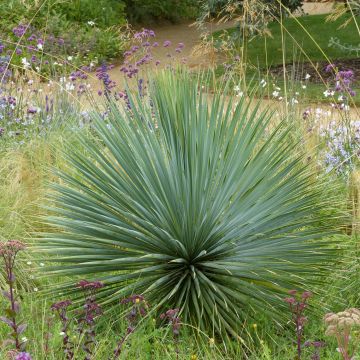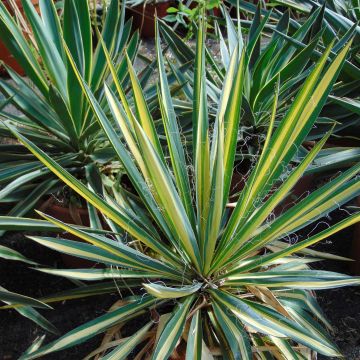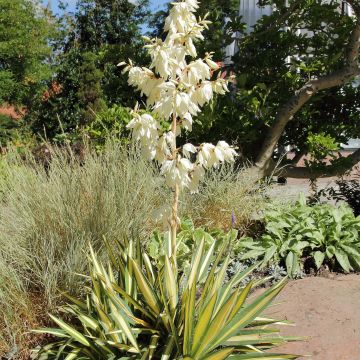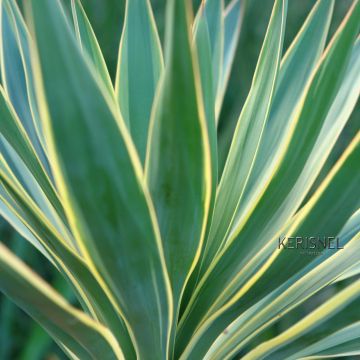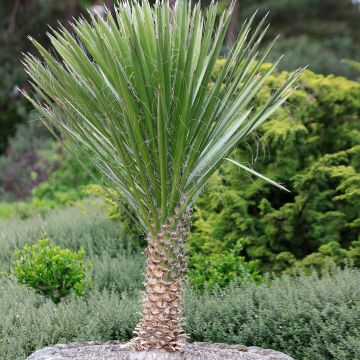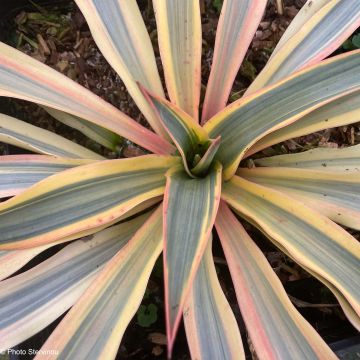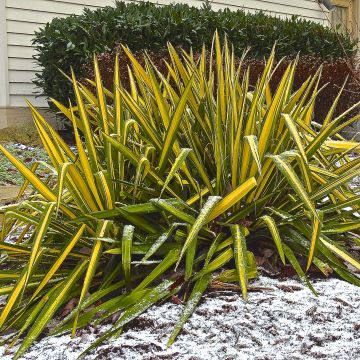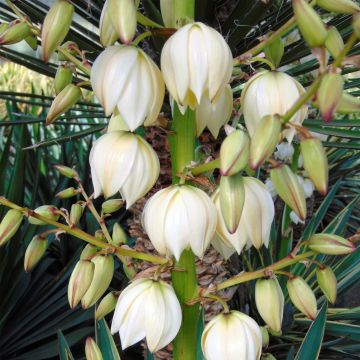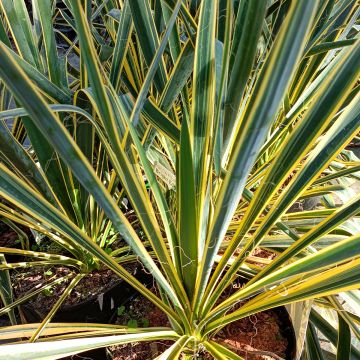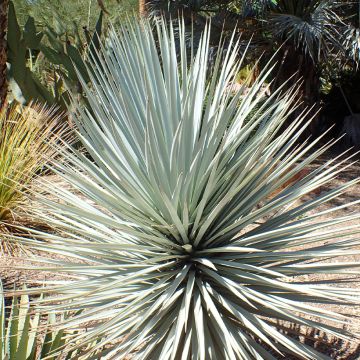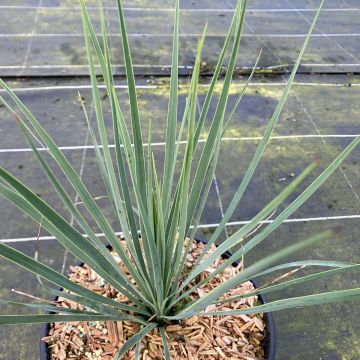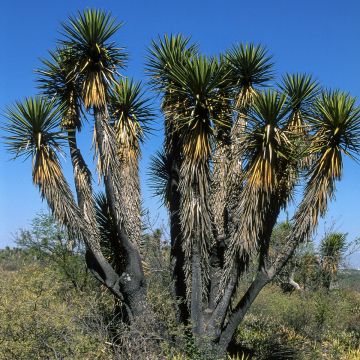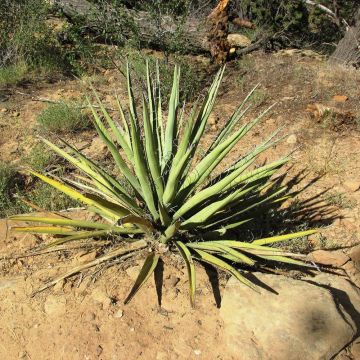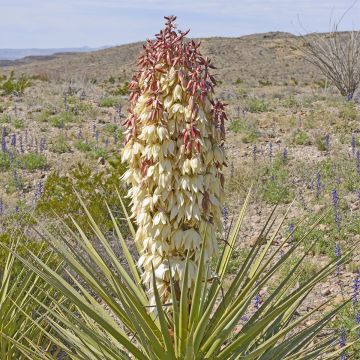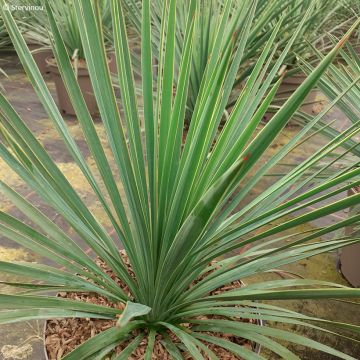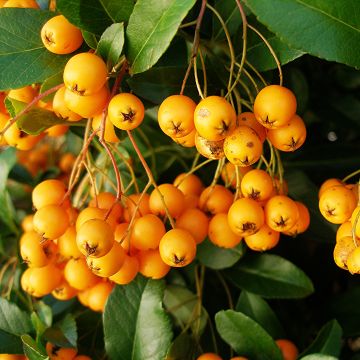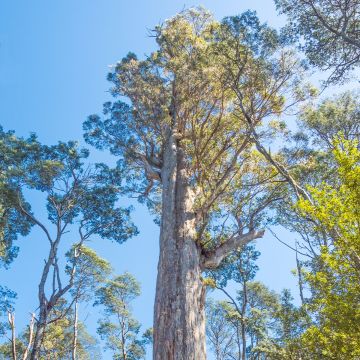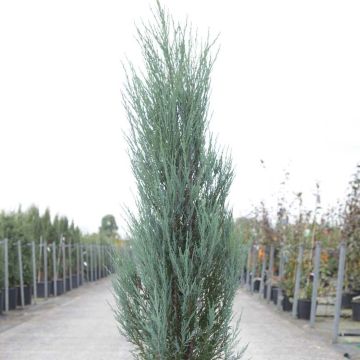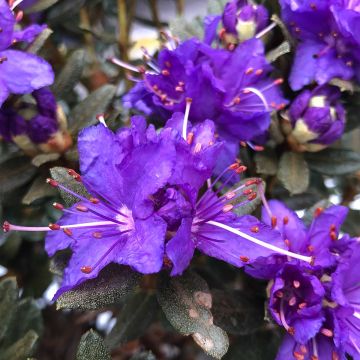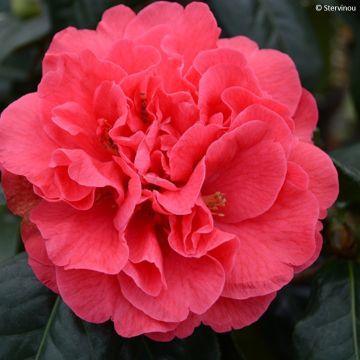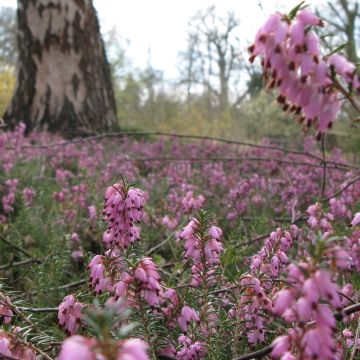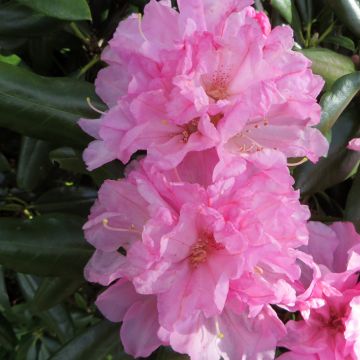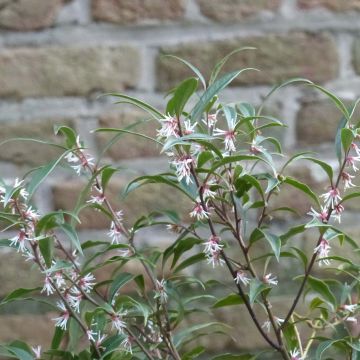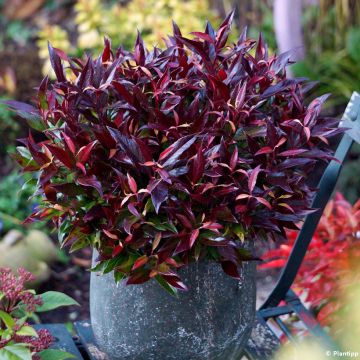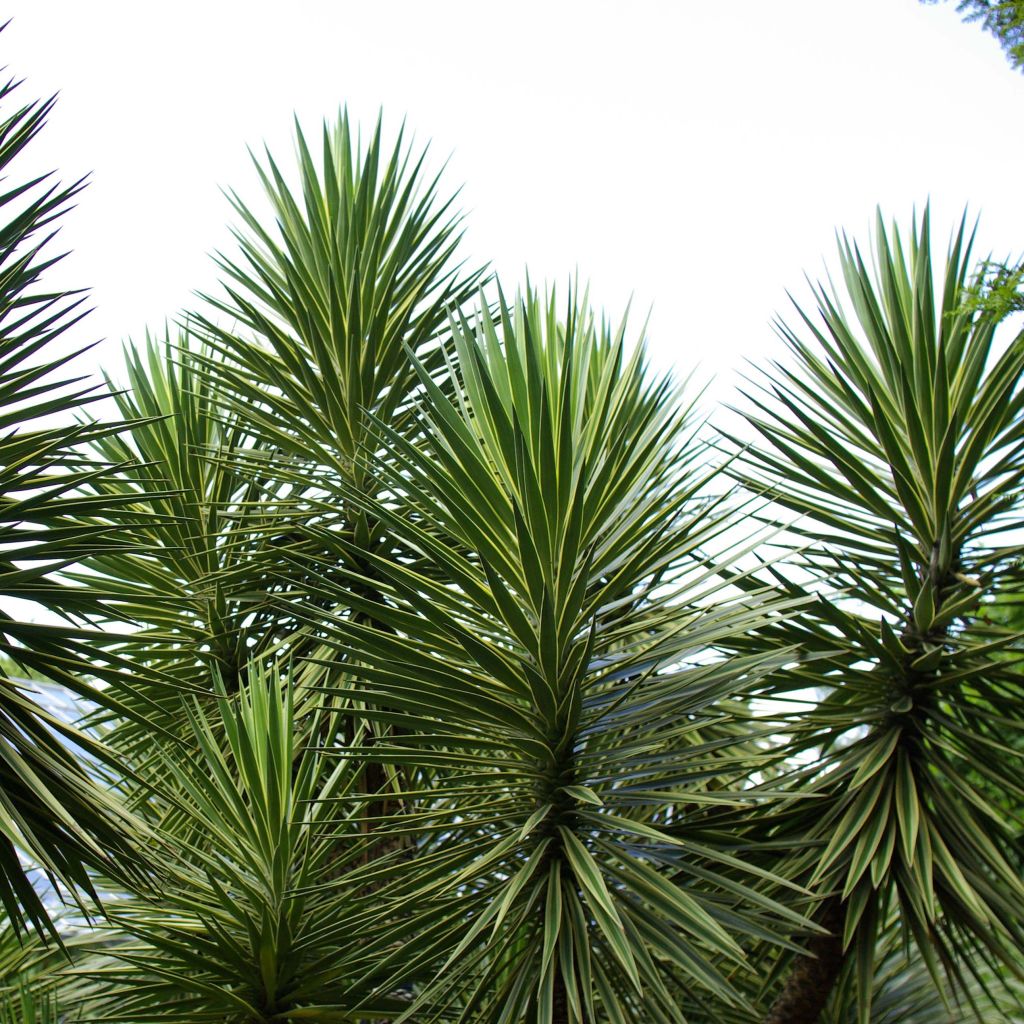

Yucca aloifolia - Yucca à feuilles d'Aloès.
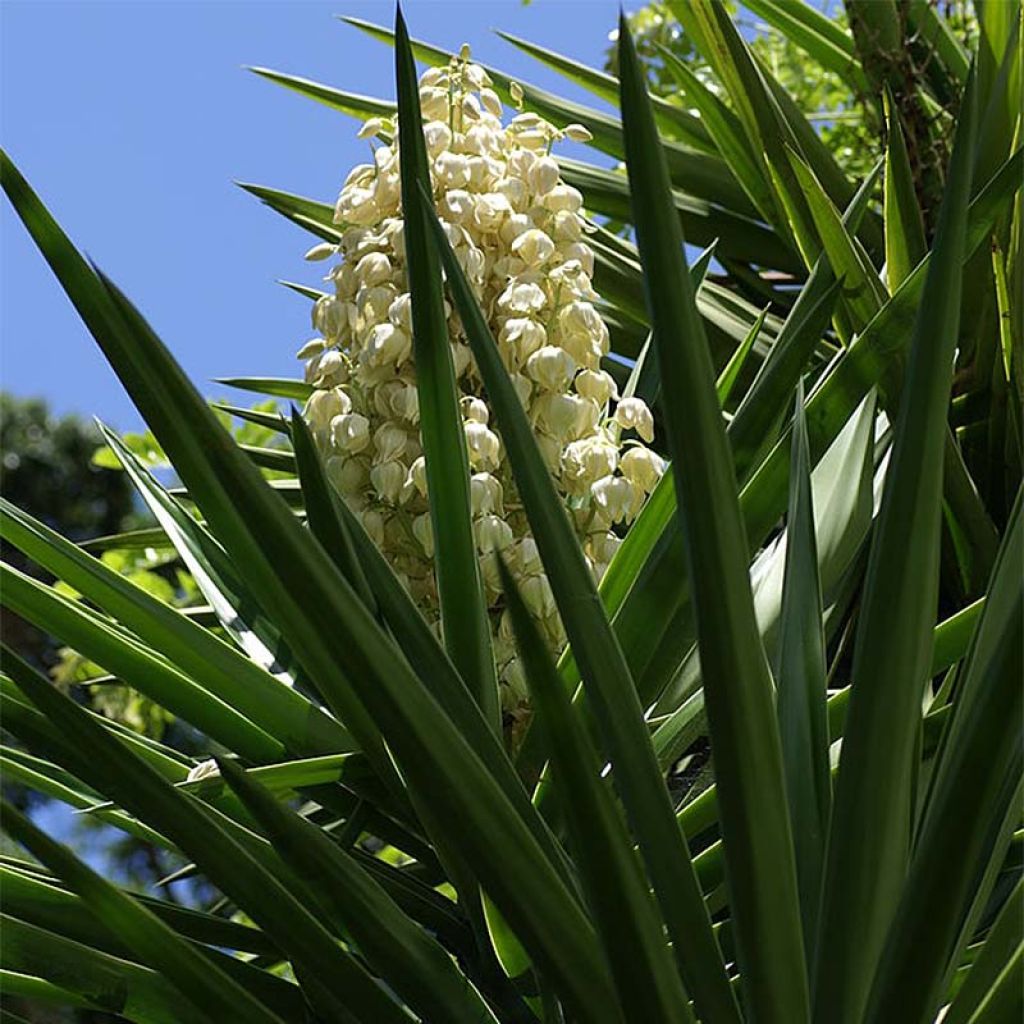

Yucca aloifolia - Yucca à feuilles d'Aloès.
Yucca aloifolia
Yucca aloifolia
Aloe Yucca, Spanish Bayonet, Dagger Plant
Beautiful exotic vine-plant. Exposed to the sun, it thrives in our oceanic climate and forms tillers! However, be careful of the sharp tips that can even pierce through certain clothing.
Samantha, 13/10/2022
Why not try an alternative variety in stock?
View all →This plant carries a 24 months recovery warranty
More information
We guarantee the quality of our plants for a full growing cycle, and will replace at our expense any plant that fails to recover under normal climatic and planting conditions.
From €5.90 for pickup delivery and €6.90 for home delivery
Express home delivery from €8.90.

Does this plant fit my garden?
Set up your Plantfit profile →
Description
Yucca aloifolia, sometimes called Aloe Yucca or Spanish Dagger due to its sword-shaped leaves armed with a formidable spine, is a shrub native to the desert areas of Mexico that brings a highly exotic quality to the garden while tolerating our winters quite well. With relatively rapid growth for its genus, this yucca forms rosettes at the top of a short trunk, branching out with age, with large stiff and tough dark green leaves. Its summer flowering is spectacular, and its warlike appearance works wonders on a large arid slope. A steep pathway lined with its tall white-pink spikes has a certain regal charm to it.
Native to the southeastern United States, or more precisely a thin coastal strip bordering the northern Gulf of Mexico and the southeast of the United States, Yucca aloifolia is capable of withstanding temperatures of around -14 °C (6.8 °F) in dry soil, as well as long periods of summer drought. It is a rhizomatous plant belonging to the agave family. When young, Yucca aloifolia forms a shaggy ball, naturally sparsely branched. After many years, it can develop a trunk 3 to 6 m (10 to 20 ft) tall and 12 to 15 cm (5 to 6 in) in diameter, slightly swollen at the base, with few branches. In our temperate climates, the plant will reach 3 to 4 m (10 to 13 ft) in all directions when in bloom, with a foliage height of 2 m (7 ft). The tough leaves are arranged in a rosette. They are 50 cm (20 in) long and 3-4 cm (1-2 in) wide, rigid and lanceolate with a pointed blade shape. Flowering occurs after 3 to 4 years of growth. In this species, the terminal inflorescence does not necessarily result in the division of the rosette that carries it. The flowers, bell-shaped and pendant, measure 5 cm (2 in) in diameter and are pure white with a wash of pink at the base of the petals. They are carried on upright and branched panicles measuring 50 to 80 cm (20 to 32 in) in height, and reaching over 3 m (10 ft) in height. This yucca is the only one capable of producing fruit in our temperate climates: they are fleshy, edible, have the appearance of small violet-pink aubergines, and their flavour resembles that of blackcurrants to some palates. The plant produces a few offshoots, forming a small cluster of trunks after a few years.
Yucca aloifolia will thrive in any well-drained soil, even if it is dry and poor. It should be kept a little distance from pathways and young children, due to its dangerously pointed leaves. This large plant is ideal for structuring a large rockery, or for brilliantly occupying the centre of an exotic bed. It can be planted as a standalone specimen or combined on an arid slope with Puya caerulea, Agave americana, prickly pear cactus, hardy columnar cacti (Cleistocactus strausii, Cylindropuntia imbricata), and equally undemanding Canary Island viper's bugloss. Aligned behind a small hedge of myrtle, Westringia, rosemary, Pittosporum, Myrsine africana or boxwood, it can create a beautiful defensive background on the garden's edge. It can also be planted in a very large pot on the terrace, right next to a banana tree, carefully choosing the most sheltered spot, in full sun, and away from foot traffic to avoid contact with its sharp leaves.
Report an error about the product description
Yucca aloifolia in pictures
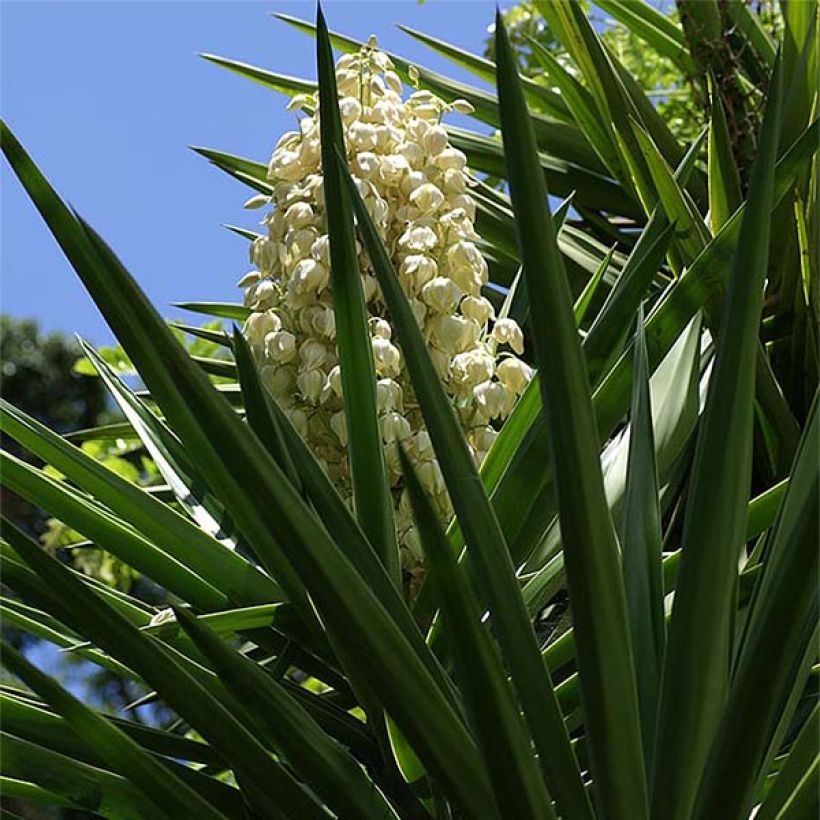

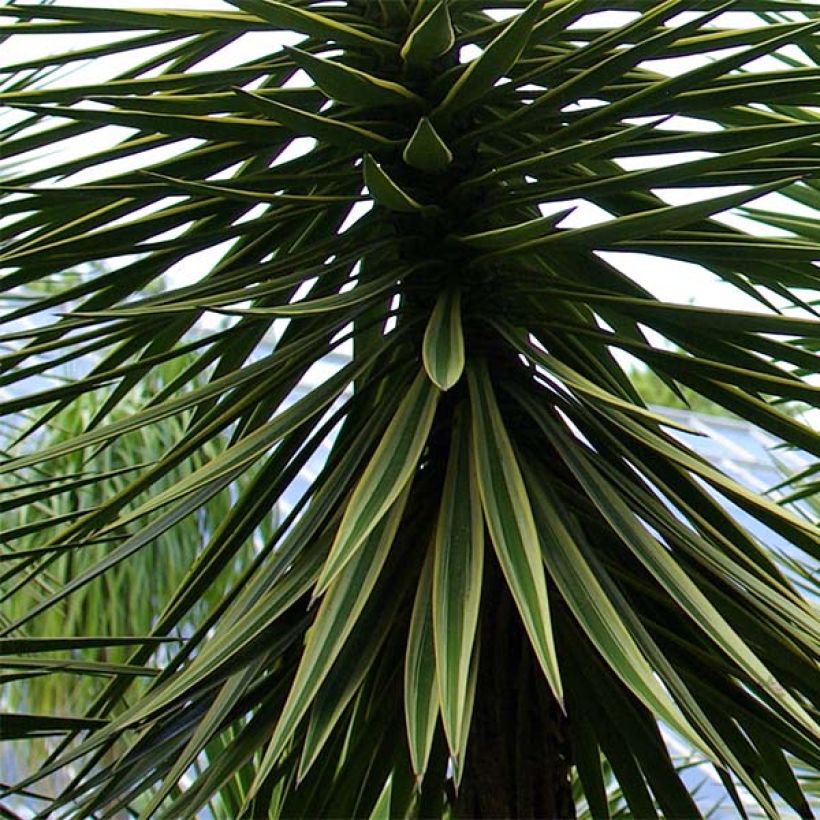

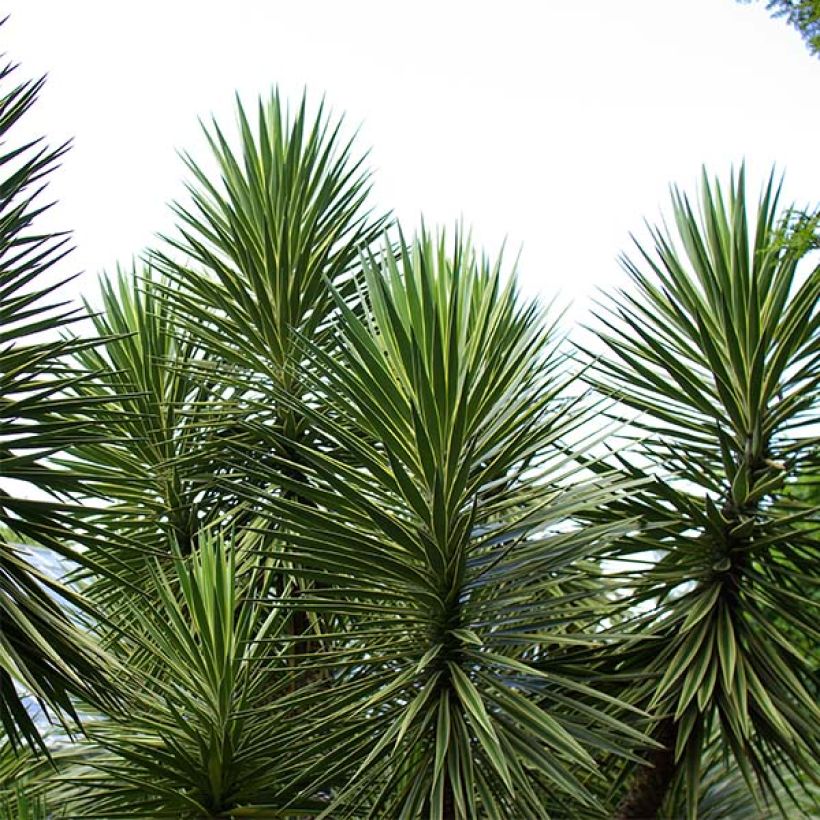

Plant habit
Flowering
Foliage
Botanical data
Yucca
aloifolia
Asparagaceae
Aloe Yucca, Spanish Bayonet, Dagger Plant
North America
Other Yucca
Planting and care
Plant Yucca aloifolia in spring, in a very sunny and sheltered location if your garden is in a borderline hardiness zone. An adult specimen can withstand brief frosts of around -14 °C (6.8 °F). Its growth is about 15 to 20 cm (6 to 8 in) per year in our temperate climates. In mild climates, it is preferable to plant it in autumn, especially in hot and dry climates during summer. This species dreads humidity, especially when combined with cold: plant it in a well-drained soil, ideally in a large rockery, a raised bed with gravel-enriched soil, or a rocky slope. However, it is not picky about soil pH, which can be slightly acidic, sandy, stony, or even slightly chalky. It can tolerate poor soil, but its growth will be slightly faster in somewhat fertile soil. Monitor watering during the first 2 years, especially during hot and dry periods. Remove faded stems.
If your Yucca looks beautiful but does not flower, it is probably too young, or has only been in your garden for 3 or 4 years. Indeed, it seems that this plant takes time to establish itself and only flowers after 8 years. Then, depending on the sunlight and climate, it will flower every year, or every 2 or 3 years.
Propagation:
Yucca aloifolia can be easily propagated by stem cuttings. It should be noted that plants propagated from cuttings produce fewer roots than those from seeds, making them susceptible to strong winds and less resistant to drought in hot climates.
Fertilisation in yuccas:
In their countries of origin, Yucca flowers are pollinated only by a few species of tiny primitive butterflies without a proboscis that live in symbiosis with the plant, such as Prodoxus. The female of these butterflies carries pollen grains from one flower to the pistil of another. She lays a few eggs at the base of the flower. The young caterpillars feed on some of the seeds. Since Prodoxus is not part of our native fauna, most yuccas grown in our gardens never produce fruits. Only Yucca aloifolia is capable of doing so, because its pollination does not depend on the presence of these micromoths.
Planting period
Intended location
Care
-
, onOrder confirmed
Reply from on Promesse de fleurs
Evergreen shrubs
Haven't found what you were looking for?
Hardiness is the lowest winter temperature a plant can endure without suffering serious damage or even dying. However, hardiness is affected by location (a sheltered area, such as a patio), protection (winter cover) and soil type (hardiness is improved by well-drained soil).

Photo Sharing Terms & Conditions
In order to encourage gardeners to interact and share their experiences, Promesse de fleurs offers various media enabling content to be uploaded onto its Site - in particular via the ‘Photo sharing’ module.
The User agrees to refrain from:
- Posting any content that is illegal, prejudicial, insulting, racist, inciteful to hatred, revisionist, contrary to public decency, that infringes on privacy or on the privacy rights of third parties, in particular the publicity rights of persons and goods, intellectual property rights, or the right to privacy.
- Submitting content on behalf of a third party;
- Impersonate the identity of a third party and/or publish any personal information about a third party;
In general, the User undertakes to refrain from any unethical behaviour.
All Content (in particular text, comments, files, images, photos, videos, creative works, etc.), which may be subject to property or intellectual property rights, image or other private rights, shall remain the property of the User, subject to the limited rights granted by the terms of the licence granted by Promesse de fleurs as stated below. Users are at liberty to publish or not to publish such Content on the Site, notably via the ‘Photo Sharing’ facility, and accept that this Content shall be made public and freely accessible, notably on the Internet.
Users further acknowledge, undertake to have ,and guarantee that they hold all necessary rights and permissions to publish such material on the Site, in particular with regard to the legislation in force pertaining to any privacy, property, intellectual property, image, or contractual rights, or rights of any other nature. By publishing such Content on the Site, Users acknowledge accepting full liability as publishers of the Content within the meaning of the law, and grant Promesse de fleurs, free of charge, an inclusive, worldwide licence for the said Content for the entire duration of its publication, including all reproduction, representation, up/downloading, displaying, performing, transmission, and storage rights.
Users also grant permission for their name to be linked to the Content and accept that this link may not always be made available.
By engaging in posting material, Users consent to their Content becoming automatically accessible on the Internet, in particular on other sites and/or blogs and/or web pages of the Promesse de fleurs site, including in particular social pages and the Promesse de fleurs catalogue.
Users may secure the removal of entrusted content free of charge by issuing a simple request via our contact form.
The flowering period indicated on our website applies to countries and regions located in USDA zone 8 (France, the United Kingdom, Ireland, the Netherlands, etc.)
It will vary according to where you live:
- In zones 9 to 10 (Italy, Spain, Greece, etc.), flowering will occur about 2 to 4 weeks earlier.
- In zones 6 to 7 (Germany, Poland, Slovenia, and lower mountainous regions), flowering will be delayed by 2 to 3 weeks.
- In zone 5 (Central Europe, Scandinavia), blooming will be delayed by 3 to 5 weeks.
In temperate climates, pruning of spring-flowering shrubs (forsythia, spireas, etc.) should be done just after flowering.
Pruning of summer-flowering shrubs (Indian Lilac, Perovskia, etc.) can be done in winter or spring.
In cold regions as well as with frost-sensitive plants, avoid pruning too early when severe frosts may still occur.
The planting period indicated on our website applies to countries and regions located in USDA zone 8 (France, United Kingdom, Ireland, Netherlands).
It will vary according to where you live:
- In Mediterranean zones (Marseille, Madrid, Milan, etc.), autumn and winter are the best planting periods.
- In continental zones (Strasbourg, Munich, Vienna, etc.), delay planting by 2 to 3 weeks in spring and bring it forward by 2 to 4 weeks in autumn.
- In mountainous regions (the Alps, Pyrenees, Carpathians, etc.), it is best to plant in late spring (May-June) or late summer (August-September).
The harvesting period indicated on our website applies to countries and regions in USDA zone 8 (France, England, Ireland, the Netherlands).
In colder areas (Scandinavia, Poland, Austria...) fruit and vegetable harvests are likely to be delayed by 3-4 weeks.
In warmer areas (Italy, Spain, Greece, etc.), harvesting will probably take place earlier, depending on weather conditions.
The sowing periods indicated on our website apply to countries and regions within USDA Zone 8 (France, UK, Ireland, Netherlands).
In colder areas (Scandinavia, Poland, Austria...), delay any outdoor sowing by 3-4 weeks, or sow under glass.
In warmer climes (Italy, Spain, Greece, etc.), bring outdoor sowing forward by a few weeks.

































